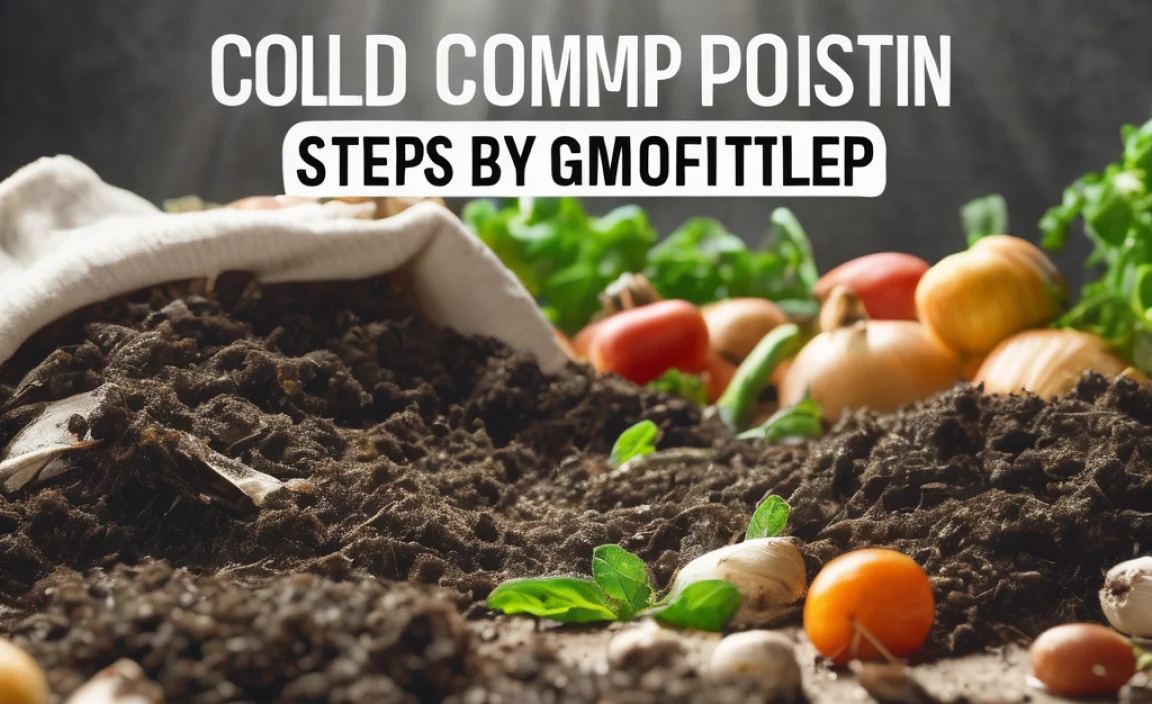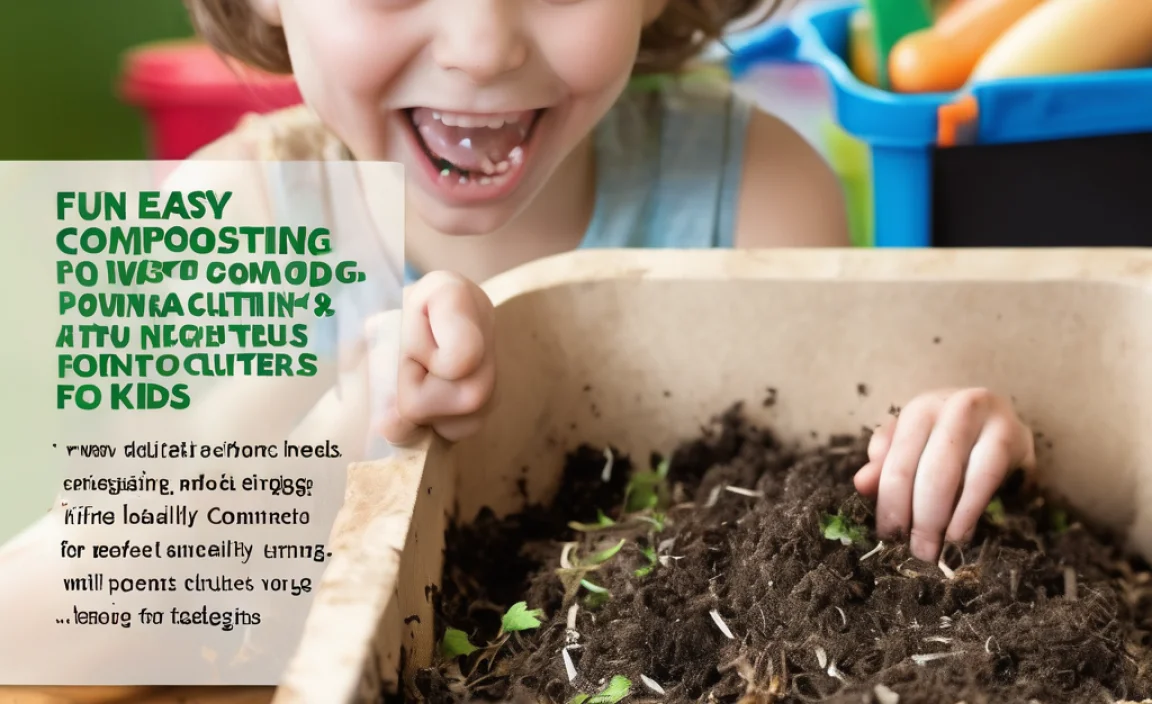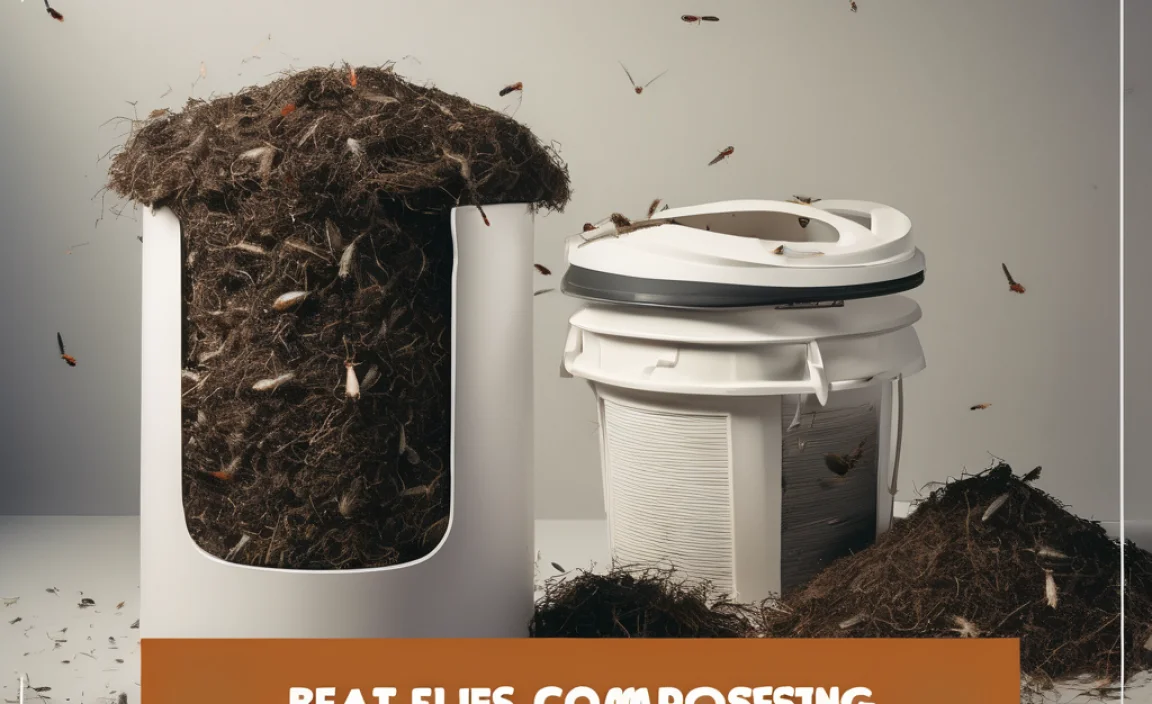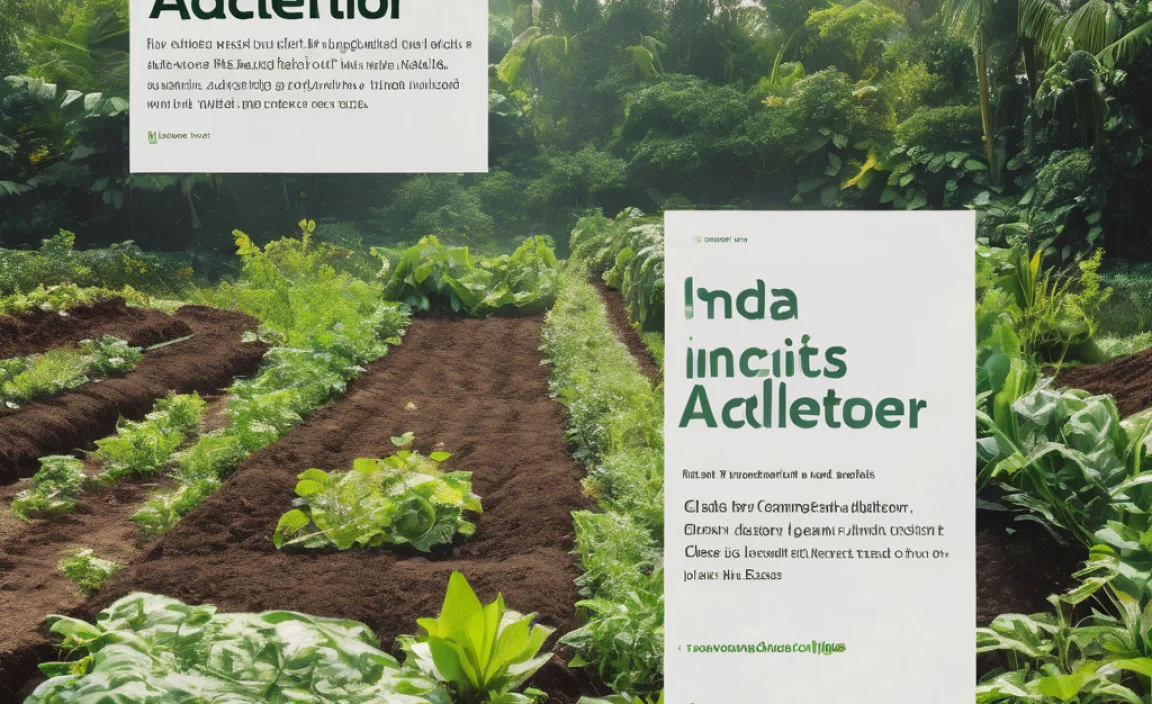Dreaming of fresh herbs or a tiny patch of veggies right on your balcony? It often feels impossible, especially if you think composting is messy or complicated. Many city dwellers feel this way, but don’t let a lack of yard space stop you! We’re going to break down how to create your own fantastic compost right on your balcony. It’s easier than you think, and we’ve got a simple, step-by-step plan to get you started. Get ready to transform your kitchen scraps into garden gold!
Garden Compost Balcony: Effortless Success for Beginners
Hey there, neighbor! Troy D Harn here from TopChooser. So, you’ve got a balcony and a desire to get your hands a little dirty, maybe grow some basil for your pasta or some cherry tomatoes for a snack. That’s fantastic! But then comes the thought: “Where am I supposed to compost without a yard?” It’s a common hurdle for apartment dwellers and condo owners. The good news is, you absolutely can compost on a balcony. It just requires a few smart choices and a little know-how. Forget those images of smelly, sprawling piles. We’re talking neat, contained, and surprisingly simple composting systems perfect for small spaces. Let’s dive into making your balcony garden dreams a reality with effortless balcony composting!
Why Balcony Composting is a Game-Changer
Think about it: you’re reducing waste, creating amazing food for your plants, and enjoying a bit of green living, all from your urban oasis. It’s a win-win-win!
- Reduce Waste: A good chunk of your kitchen scraps can be composted, keeping them out of landfills.
- Feed Your Plants: Compost is nature’s perfect fertilizer. Your balcony plants will thank you with healthier growth and tastier harvests.
- Save Money: Why buy expensive potting soil and fertilizers when you can make your own?
- Connect with Nature: Even a small composting system brings a little bit of the natural world closer.
- It’s Fulfilling: There’s a special kind of satisfaction that comes from nurturing something and seeing it grow, powered by your own efforts.
Choosing Your Balcony Composting Method
When you’re composting in a small space, containment and odor control are key. Thankfully, there are fantastic options designed specifically for this purpose.
1. The Worm Composter (Vermicomposter)
This is a super popular choice for balconies because worm bins are compact, efficient, and, when managed correctly, virtually odorless. Red wiggler worms do the heavy lifting, breaking down your food scraps into nutrient-rich worm castings (worm poop – the good kind!).
- Pros: Fast decomposition, produces high-quality castings, very little smell, educational and fun.
- Cons: Requires specific types of worms, can’t handle large amounts of raw meat/dairy/oily foods, needs temperature regulation.
Setting Up a Worm Composter
You can buy pre-made worm bins or DIY one. A common DIY approach uses two opaque plastic storage bins. You’ll need:
- Two identical opaque plastic storage bins with lids (around 10-15 gallons each). Opaque bins block light, which worms dislike.
- A drill with various bit sizes.
- Bedding material (shredded newspaper, cardboard, coco coir).
- A starter culture of red wiggler worms (Eisenia fetida). You can typically find these online or at local bait shops.
Steps:
- Prep the Bins: Take one bin and drill small drainage holes (about 1/8 inch) in the bottom. This is your collection bin. Take the second bin and drill more, slightly larger holes (about 1/4 inch) in the bottom for aeration and drainage. This is your working bin. Drill a few small holes in the lid for air exchange.
- Add Bedding: Moisten your bedding material until it’s like a wrung-out sponge. Fill the working bin about 2/3 full with this damp bedding.
- Introduce the Worms: Gently place your red wiggler worms on top of the bedding. They will burrow down themselves. Give them a day or two to settle before feeding.
- Start Feeding: Begin by adding small amounts of chopped-up, worm-friendly food scraps. Bury the food scraps under the bedding.
- Collect ‘Tea’: Any liquid that drains into the bottom bin is called “worm tea.” Dilute this with water (about 1 part tea to 10 parts water) and use it to fertilize your plants.
2. The Bokashi Bin System
Bokashi is a Japanese method of fermentation that pickles your food waste. It uses an anaerobic (oxygen-free) process with a special Bokashi bran inoculated with effective microorganisms (EM). It’s super efficient at breaking down a wider range of food scraps, including meat and dairy, which are generally avoided in traditional composting.
- Pros: Handles almost all food scraps (meat, dairy, oils), compact, minimal odor during processing, fast pre-composting stage.
- Cons: Requires purchasing Bokashi bran, the end product needs to be buried or added to another compost system to fully decompose (it’s pre-composted, not fully finished compost), can have a slight pickled smell when opened.
Setting Up a Bokashi Bin
You’ll typically buy a Bokashi bin system, which usually includes a bucket with a spigot and an airtight lid.
- Bokashi bin (or a sturdy bucket with an airtight lid).
- Bokashi bran (available online).
- Food scraps.
Steps:
- Add Scraps: Place your food scraps into the Bokashi bin. Chop larger items into smaller pieces.
- Add Bran: Sprinkle a layer of Bokashi bran over the food scraps. The bran contains the microbes needed for fermentation.
- Press Down: Compact the scraps to remove as much air as possible.
- Seal the Lid: Ensure the lid is tightly sealed to maintain anaerobic conditions.
- Drain ‘Tea’: Regularly drain the liquid that collects at the bottom using the spigot. This “Bokashi tea” is highly acidic and potent. Dilute it heavily with water (1:50 or 1:100) before using it as a plant fertilizer.
- Ferment: Continue adding food scraps and bran daily for about two weeks, or until the bin is full. Then, let the sealed bin ferment for another two weeks.
- Bury or Add to Compost: The pickled material is now ready to be buried in a garden bed or added to a traditional compost pile/bin to finish decomposing. Since you’re on a balcony, you might need to mix this fermented material into a larger compost bin or a soil pot to fully break down.
3. Small Tumbler or Contained Composter
These are compact, often rotating bins designed for balconies or small patios. They offer more control over aeration and moisture than a simple bin, and some are even aesthetically pleasing.
- Pros: Good aeration, relatively neat, can speed up composting compared to static bins, contained.
- Cons: Can be pricier, might need manual turning, can get heavy when full, may not be as fast as worm composting for certain materials.
Using a Small Tumbler
These systems vary, but the general principle is to add your materials, and periodically turn/tumble the bin to mix and aerate.
- Small compost tumbler.
- Yard and kitchen waste (balanced “greens” and “browns”).
Steps:
- Layer Materials: Start with a layer of brown materials (like shredded cardboard or dried leaves), then add green materials (food scraps). Aim for a good mix.
- Add Water: The mixture should be moist, like a wrung-out sponge. Add water if needed.
- Tumble: Turn the tumbler every few days to mix the contents and introduce air.
- Monitor: Keep an eye on moisture and temperature. If it gets too wet, add more brown material.
- Harvest: The compost will be ready when it’s dark, crumbly, and smells earthy. This can take anywhere from a few weeks to a few months depending on the unit and your management.
What to Compost (and what to avoid) on Your Balcony
This is crucial for avoiding smells and attracting pests. Think of it as feeding your compost critters or microbes the right food!
“Greens” (Nitrogen-Rich Materials)
These are typically wet, vibrant materials that provide nitrogen. They include:
- Fruit and vegetable scraps (peels, cores, rinds)
- Coffee grounds and tea bags (paper ones)
- Grass clippings (in moderation)
- Plant trimmings (non-diseased)
- Eggshells (crushed)
- Bread and grains (small amounts)
“Browns” (Carbon-Rich Materials)
These are dry, woody materials that provide carbon and help with airflow. They include:
- Shredded newspaper (black and white ink only)
- Shredded cardboard (non-glossy)
- Dry leaves
- Small twigs and wood chips
- Straw or hay
- Sawdust (from untreated wood)
What NOT to Compost (Especially on a Balcony!)
These items can attract pests, create foul odors, or harbor pathogens that you don’t want in your compost, especially in close quarters.
- Meat, fish, and bones (unless using Bokashi)
- Dairy products (milk, cheese, yogurt – unless using Bokashi)
- Oily foods and grease (unless using Bokashi)
- Diseased plants
- Weeds that have gone to seed
- Pet waste (dog/cat feces)
- Chemically treated wood or yard waste
- Glossy paper or magazines
- Synthetic materials
The Magic Ratio: Greens and Browns
Composting works best when you have a good balance between your “greens” and “browns.” A common guideline is about 2 parts browns to 1 part greens by volume. This helps keep the compost moist but not soggy, and allows for good airflow, preventing smells.
If your compost is too wet and slimy, add more browns. If it seems too dry and isn’t breaking down, add more greens and a little water.
Balcony Composting: What You’ll Need
The good news is, you don’t need a lot of fancy equipment to get started. Here’s a breakdown of essential items, depending on your chosen method.
| Item | Why You Need It | Notes for Balcony Use |
|---|---|---|
| Compost Bin (Worm Bin, Bokashi, or Tumbler) | To contain your compost and manage the process | Choose a size appropriate for your balcony space and the amount of waste you produce. Look for sealed or lidded options to deter pests and odors. |
| Kitchen Countertop Scraps Collector | To collect food scraps before taking them to the main bin | A small lidded container with a charcoal filter works well to prevent odors between trips to your balcony composter. |
| Bedding Material (for Worms) | Provides habitat and food for composting worms | Shredded newspaper, cardboard, or coco coir are excellent choices. Keep it damp! |
| Bokashi Bran (for Bokashi) | Microbial inoculant to start the fermentation process | Essential for the Bokashi method; available online or at some gardening stores. |
| Watering Can or Spray Bottle | To add moisture to your compost | Critical for maintaining the right moisture level for worms or aerobic composters. |
| Shovel/Trowel | For turning compost or mixing materials | A small hand trowel or scoop will suffice for most balcony setups. |
| Compost Thermometer (Optional) | To monitor the temperature of your compost pile | Helpful for larger, actively managed aerobic composters to ensure it’s heating up properly. Less crucial for worm bins or Bokashi. |
| Gloves | For handling compost materials | Keep your hands clean and protected. |
| Finished Compost Bin/Container | To store your finished compost | A breathable bag or a sturdy tub. |
Step-by-Step Guide: Making Your Balcony Compost Success Story
Let’s put it all together. This guide focuses on a general aerobic composting bin/tumbler, which is a common and effective balcony method. If you’re using worms or Bokashi, refer back to those specific sections!
Step 1: Choose Your Location
Find a spot on your balcony that gets some shade, especially during the hottest part of the day. Too much direct sun can overheat your compost. Make sure it’s stable and won’t blow over.
Step 2: Set Up Your Bin
Assemble your chosen compost bin according to its instructions. If it’s a tumbler, make sure it spins freely. If it’s a static bin, ensure it has good drainage and aeration.
Step 3: Start with Browns
Begin by putting a layer of brown materials (shredded cardboard, dry leaves) at the bottom of your bin. This helps with drainage and airflow.
Step 4: Add Your First Greens
Start adding your kitchen scraps (fruit and veggie peels, coffee grounds). Chop them up into smaller pieces; this helps them break down faster.
Step 5: Balance with More Browns
Cover your greens with another layer of brown materials. Aim to keep your greens covered to minimize odors and deter pests. Remember the rough 2:1 brown-to-green ratio.
Step 6: Add Moisture
Your compost needs to be moist, like a wrung-out sponge. Use a watering can or spray bottle to dampen the layers as you add them. If it’s too wet, add more browns. If it’s too dry, add water and maybe some wetter greens.
Step 7: Aerate Regularly
This is key for aerobic composting. If you have a tumbler, give it a turn every 2-3 days. If you have a static bin, use a trowel or compost aerator to stir the contents every week or so. This introduces oxygen, speeds up decomposition, and prevents the dreaded anaerobic smells.
Step 8: Continue Adding Materials
As you collect more kitchen scraps, add them to the bin. Always try to cover fresh greens with browns and maintain that spongy moisture level.
Step 9: Monitor and Troubleshoot
Smelly Compost? Usually too wet or not enough browns. Add more dry brown material and turn it well. Ensure greens are covered. Are you adding prohibited items like meat or dairy?
Not Breaking Down? Probably too dry or not enough “greens” (nitrogen). Add some water and a few more nitrogen-rich scraps. Ensure it’s warm enough (balcony shade helps with this).
Pests? Make sure your bin is covered properly and that you’re not adding things like meat or dairy (unless using Bokashi). Burying food scraps under browns also helps.
Step 10: Harvest Your Compost!
Your compost is ready when it’s dark, crumbly, earthy-smelling, and you can no longer recognize the original materials. This can take anywhere from 4 weeks to 3 months, depending on your method, how often you turn it, and the materials used. For tumblers, you might harvest from one side while continuing to fill the other.
Once ready, you can screen out any larger, unfinished bits and add them back into your active compost pile. Store your finished compost in a labeled container or bin.
Using Your Balcony Compost
The moment of truth! Your homemade compost is a superfood for your plants. Here’s how to use it:
- Potting Mix Amendment: Mix compost into your existing potting soil for containers. A ratio of 1 part compost to 3-4 parts potting soil is a good starting point for most plants.
- Top Dressing: Spread a thin layer of compost on top of the soil in your pots.

I am passionate about home engineering. I specialize in designing, installing, and maintaining heating, ventilation, and air conditioning systems. My goal is to help people stay comfortable in their homes all year long.




